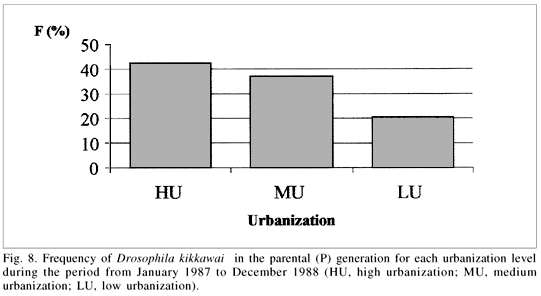Body color polymorphism of urban populations of cosmopolite fly Drosophila kikkawai Burla, 1954 was investigated in relation to its possible association with environmental temperature. Samples of D. kikkawai were collected in spring, summer, autumn and winter between 1987 to 1988, in zones with different levels of urbanization in the southern Brazilian city of Porto Alegre, Rio Grande do Sul. A clear association was observed between darker flies and both seasons with low temperatures and areas of low urbanization (where temperature is generally lower than in urbanized areas). Results of preliminary laboratory experiments involving six generations of flies grown in chambers at temperatures of 17º and 25ºC confirmed this tendency to a relationship between body color and temperature, with allele frequency of the main gene involved in body pigmentation changing over time.
Drosophila; urban populations; color polymorphism; temperature









